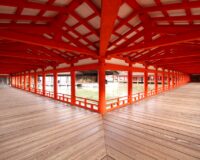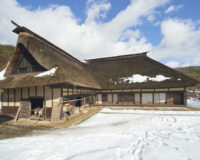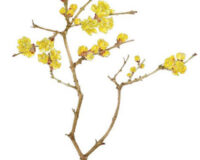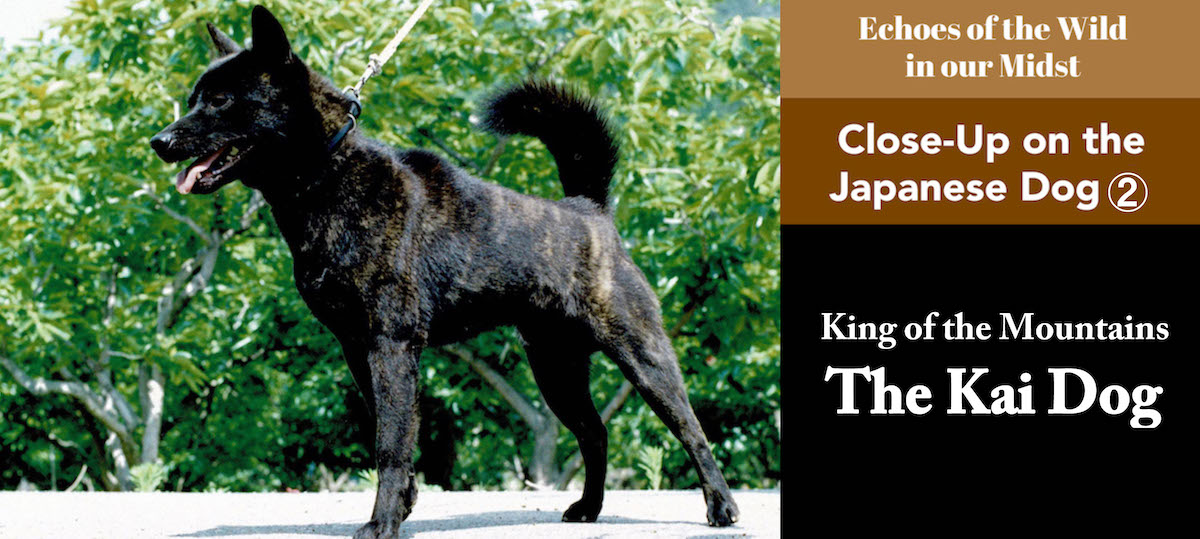
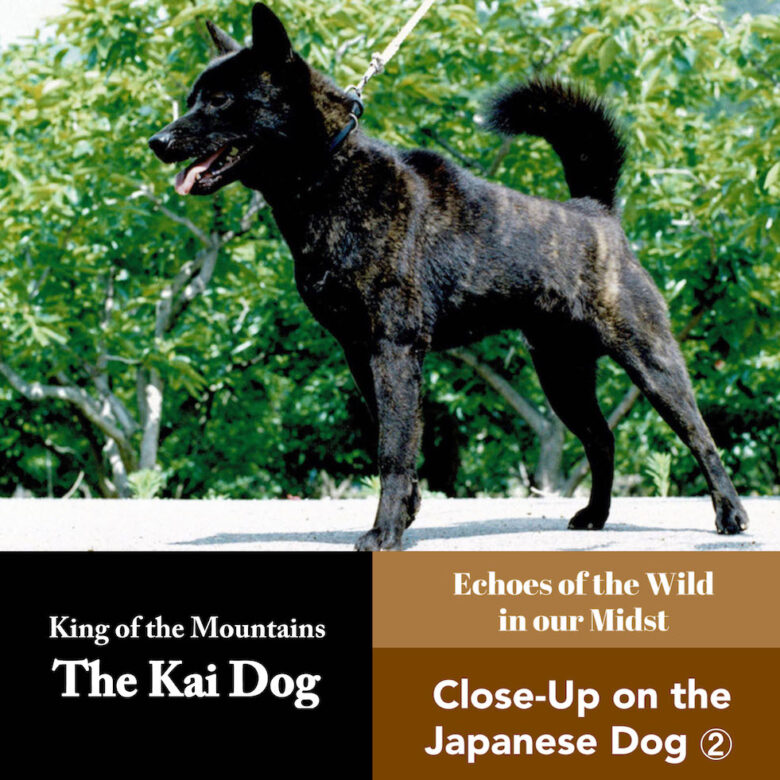
Dogs are thought to have accompanied humans to the Japanese isles during the Jōmon Period, traditionally dated between around 14,000 and 300 BCE. Japan’s geographical isolation and the fact that breeding was left up to nature mean that Japanese dogs today remain very similar to their Jōmon Period ancestors. Until comparatively recently in Japan, dogs were left pretty much to their own devices when it came to breeding, with little human interference in terms of selection. Japan’s dogs were largely shaped by their local terrain, as only those best adapted to this land of mountains and swift-running rivers survived to leave progeny.
In this series we explore the origins of the six native dog breeds that have been declared natural monuments in Japan – the Hokkaidō-inu, the Akita-inu, the Shiba-inu (also called Shiba-ken), the Kai-ken, the Kishū-inu, and the Shikoku-inu.
Photos and Text : 舟橋 愛 Ai Funahashi / English Version : Judy Evans
Keyword : Japanese Dog / Kai-ken / Yamanashi Prefecture / Kai Dog / Kai Province / Nihon Ken / Inu
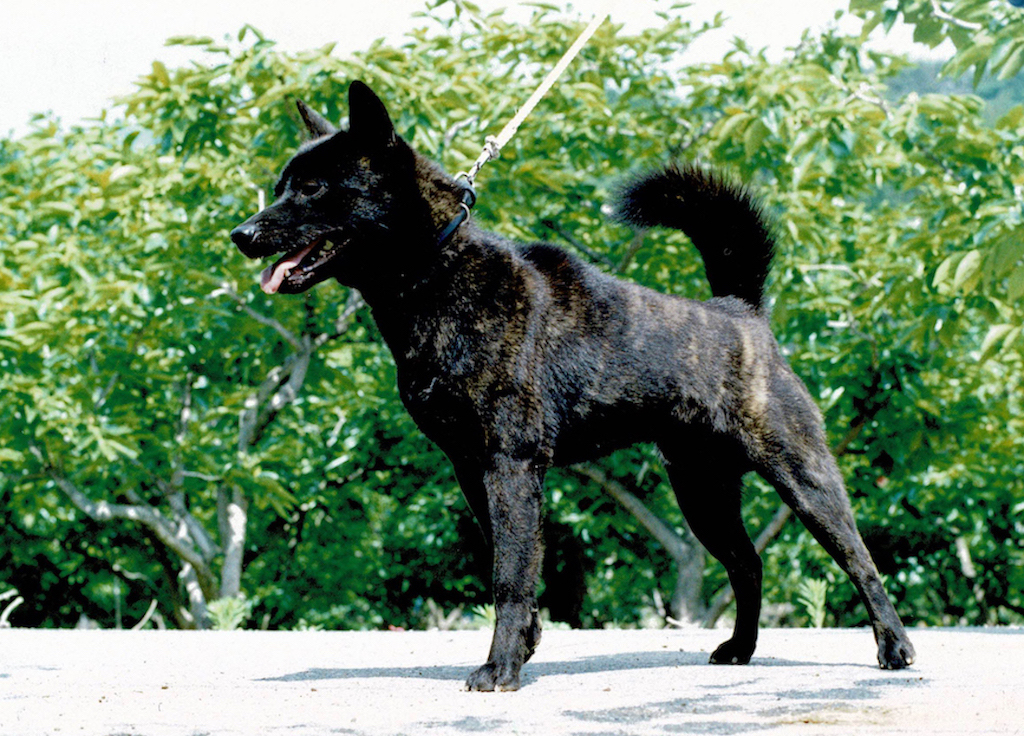
The “Tiger-Skinned Dog” that Once Roamed the Mountains of Kai Province
In the second article in our series on Japanese dogs, we look at the Kai-ken (Kai dog), a native dog from the mountains of Yamanashi Prefecture. The Kai dog was declared a national monument in 1934, the second Japanese dog to have been designated as such, after the Akita-inu. Awareness of this rare breed has increased recently, with the Kai dog having even been featured on television. Despite this exposure, however, the Kai still remains one of the least-known and understood of the Japanese dog breeds. To learn about the background and history of the breed, we begin by talking to Kenji Ōgawara, owner of Genrō Kensha breeding kennels in Chichibu, Saitama Prefecture, where the focus is on preserving the original Kai-ken breed.
As its name suggests, the Kai dog originates from Kai Province (modern-day Yamanashi Prefecture), an inland province of Honshu Island. It is particularly associated with the villages of Ashiyasu, Hirabayashi, Nishiyama, Kamikuishiki, Miyamoto and Nishihomura—isolated mountain villages that were once extremely difficult to access. These dogs were prized by hunters for their ability to hunt game such as deer, bears, and wild boar. One of the breed’s most distinctive features is its luxuriant striped brindle coat, which earns the Kai the nickname of “tora-inu” (tiger dog). There are three recognised colours, aka-tora (red brindle), chū-tora (medium brindle) and kuro-tora (black brindle), all of which provide excellent camouflage in the wild. Kai dogs have particularly well-developed hock joints, the part of the back leg that corresponds to the ankle, which makes them powerful climbers. Breeders in the Minami Alps region nickname the dogs “rock oysters” because of the way they are able to use their dew claws to nimbly scale rock faces and cliffs, holding fast without slipping.
When conservation efforts first began to gain momentum, it was often said that the Kai was too small to be a medium breed, but too big to be a small breed. Although the Kai falls into the category of medium-sized dog, it is only slightly larger than the smallest of the six original Japanese dog breeds, the Shiba-inu (also designated as a natural monument). The current Kai-Ken Aigokai (Kai Dog Protection Society) breed standard height is 40 to 50 centimetres, but used to be 39.5 to 45.5 centimetres.
One might wonder how such a small dog could bring down a bear or a wild boar, but the Kai-ken’s temperament and intelligence are perfectly suited to hunting. Many hunting dogs become over-excited at the sight of their quarry and try to bring down their prey by themselves, only to end up getting injured or even killed from the tusks of the wild boar or the claws of the bear. In contrast to this, the Kai-ken knows when to hold back. Once the Kai has flushed out its prey, if the animal attempts to get away, the dog bails it up by barking at it and nipping at its legs until the hunter is able to get a clear shot. The Kai uses its small stature and agility to its own advantage to avoid becoming a casualty of the hunt. This means that the hunter is able to train and work with the same dog for many years, making the Kai-ken valuable to hunters. This talent for hunting comes naturally to the tiger-skinned Kai-ken and does not need to be taught. For this reason, local hunters use the term “tora no ichinō” (the skill of the tiger) when talking about the Kai dog.

Kai Dog Revealed to the World in the 1930s
It was not until 1930 that these hunting dogs were revealed to the world. This was due to an article written for a magazine specialising in domestic dogs by Mr. Shokichi Kobayashi, a Yamanashi Prefecture veterinarian and later director of the Kofu Zoo. He had become aware of the Kai-ken back in 1924, when he spotted a “tiger-haired dog” while on a house call to a mountain village.
The following year, in 1931, Dasuke Adachi, a public prosecutor transferred from Yokohama, encountered a similar striped dog in Kofu City. Struck by the wonderful qualities of this dog, Adachi set about trying to obtain one for himself, searching everywhere. He eventually acquired a kuro-tora Kai dog from a hunter in the village of Ashiyasu. In the autumn of that year, the Kai Dog Protection Society was established, and it continues to this day.
The following excerpt, based on the physical appearance and temperament of the Kai dog belonging to Dasuke Adachi, appears in the Kai Ken Aigokai prospectus (and is translated here for the purpose of this article):
“The Kai-ken is completely devoted to a single master for its whole life. Not only does the Kai not take to strangers readily, it will risk its own life to defend its master against an attacker and is not afraid to die. The pricked ears and curly tail of the Kai-ken lend it the appearance of an inu hariko doll. The dog’s build and temperament call to mind the simple, unaffected appearance of an old samurai warrior.”
The expression, “one master for life”, is frequently used with all breeds of Japanese dog, but this characteristic seems to be particularly strong in the Kai-ken. There have been cases where a Kai dog has stopped accepting food and water once its master has died, as if wanting to follow its master into death. Other stories tell of occasions where the owner of a Kai-ken has had a mishap and died in the mountains, and the dog has lain with the body for days on end.

Does the Kai-Ken Have Wolf Ancestors?
So far, we have traced only the relatively recent history of the Kai dog—its time living with humans. However, this breed seems to have originated as either a wild dog inhabiting the mountainous area around the Southern Alps, or perhaps from a cross between a wild dog and a village dog.
The story goes that hunters would raise wild dog pups that they found in the mountains, or leave females in heat tied up in the wild in the hope that a wild dog would mate with them (although some wild dogs would kill a domestic female dog after mating, so this method may have proved impractical in reality). The Kai-ken does seem to have inherited the same wild bloodline as the Japanese wolf. In order to explore their origins, I visited Ashiyasu Village. This is a village that, when Dasuke Adachi and others started the protection society, had many fine Kai dogs.

Mr. Kazumi Ii, who runs Kai-Ken no Sato Ashiyasu, kindly agreed to be interviewed. In the past, he told us, every family in the village had at least one Kai dog. However, since the Japanese serow, which was the main target prey, became a natural monument, the number of Kai dogs in the village gradually dwindled. (By an odd coincidence, the Japanese serow was designated as a natural monument in 1934, the same year as the Kai dog).
“Given that Ashiyasu is the birthplace of the Kai-ken”, Ii san tells us, “it would be sad to see the breed disappear here. So, in around 1985 the Kai-Ken Hozonkai (Kai Dog Preservation Society) was formed in Ashiyasu. The society itself ceased operating in 2003, but I already had my own Kai dogs and was completely beguiled by them, so I’ve continued breeding them, but in an individual capacity.”
There are currently eight Kai dogs at Kai-Ken no Sato Ashiyasu. Kai dogs have a strong tendency to be attached to “one owner for life”, and are cautious and reluctant to show themselves to people, but they can grow to be sociable and friendly depending on how they are raised. Mr. Ii’s Kai-ken are worthy of being called Kai ambassadors, and most of his dogs are sociable.
As Mr Ii was showing me the dogs, I asked if he knew much about the Kai-ken from the old days. He told me about how wild dogs hanging around the village would sometimes give birth to pups under the shelter of people’s verandas, and that his uncle had actually ended up adopting one of these pups.
“Even though it was just a pup, it was so wild that he couldn’t tame it. He couldn’t even manage to get a collar around its neck. In the end, he had to take it to the vet and have it sedated so that he could put the collar on.”
It was spine-tingling to hear about how wild these dogs once were, and to think that they were roaming freely around this region as little as 80 years ago. It’s satisfying to know that the distant descendants of those wild dogs can still be seen in Ashiyasu Village, given that there was once a time when it was feared that the dogs had disappeared for good.
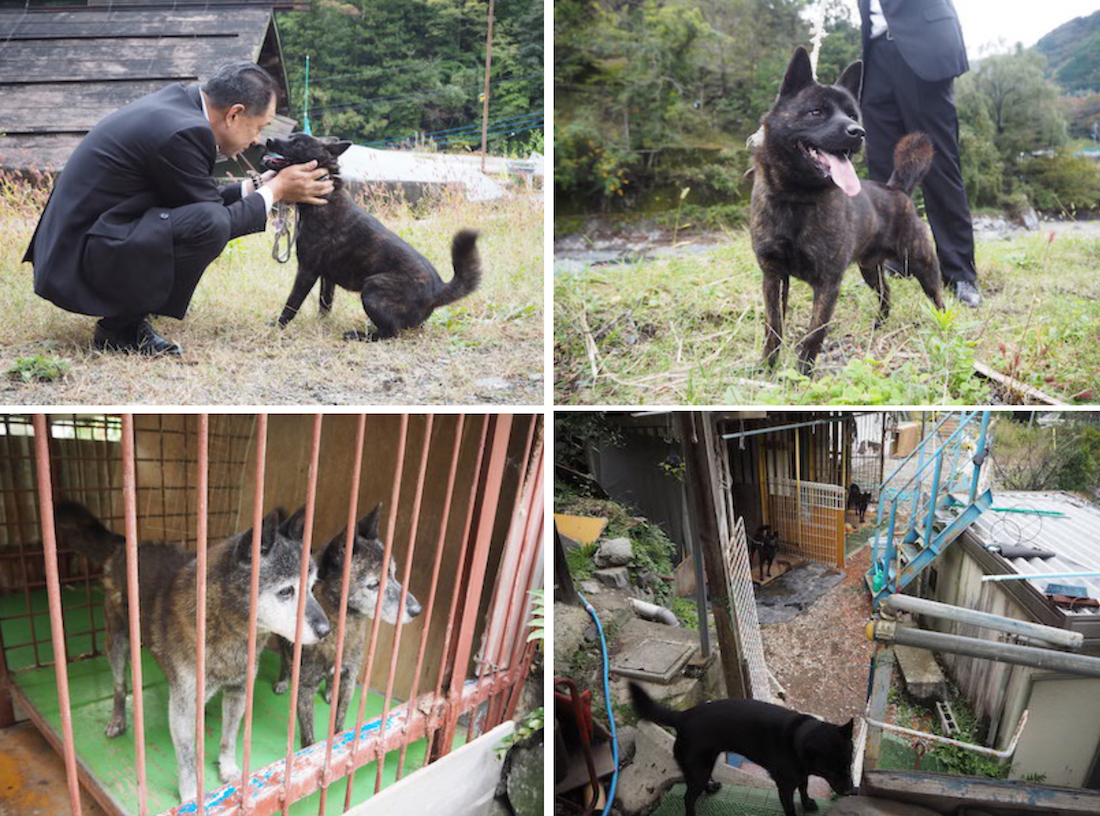
Where to From Here for the Kai Dog?
On October 27, 2019, the first “Kai Dog Festival” was held in the city of Minami Alps, co-sponsored by the city and the Kai Dog Protection Society. It was a grand event to commemorate the 150th show put on by the Kai Dog Protection society, made all the more festive with the addition of food and drink stalls, and booths promoting regional tourism.
This was a chance to meet Kai Ken Protection Society Chair Yokomori Teruo and Judge Niizu Toyoake and ask them about the appeal of the Kai-ken and the future of the breed.
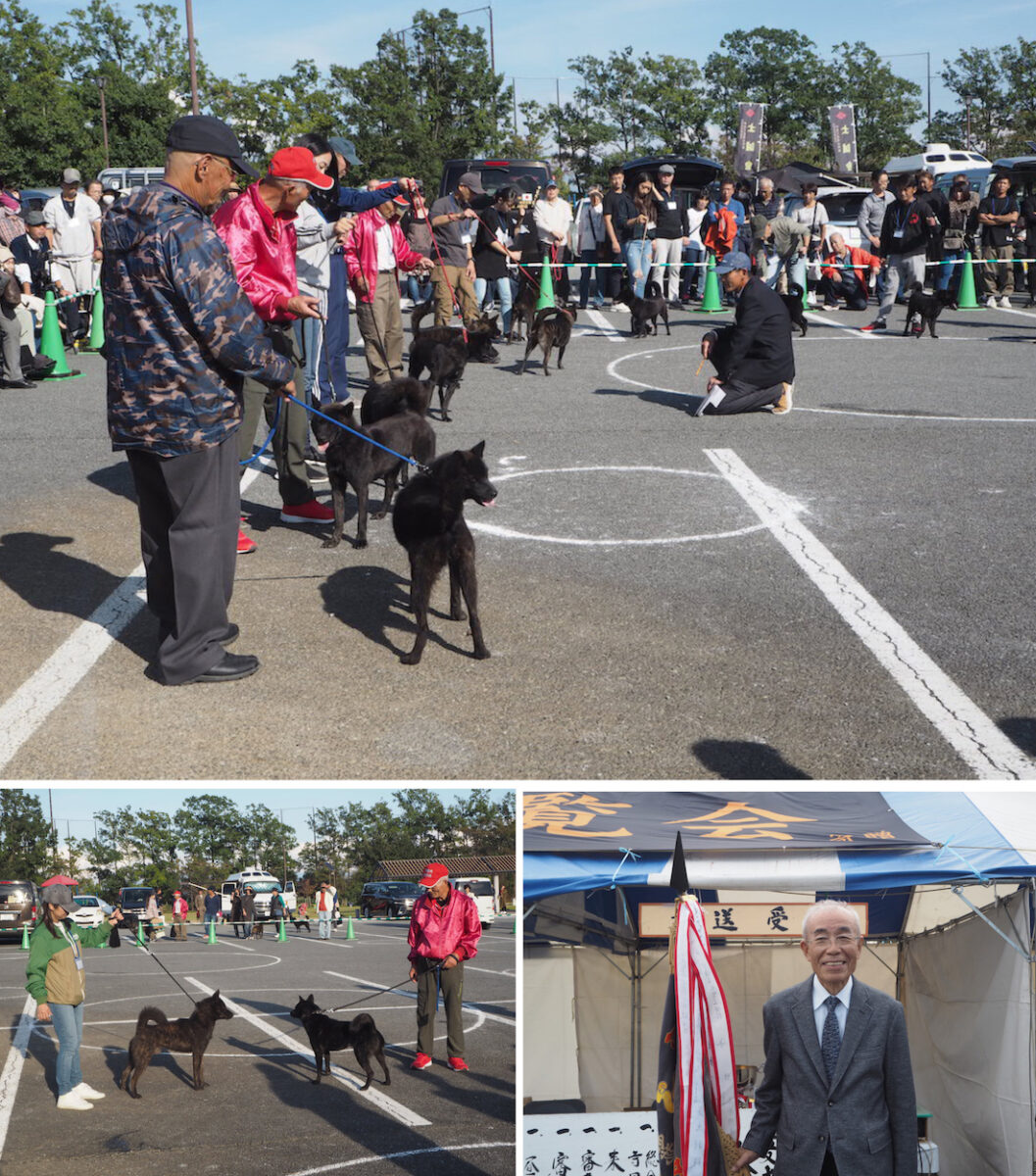
Chairman Yokomori and Judge Niizu, have both worked for many years with champion Kai dogs in Yamanashi Prefecture, where the breed originated. Regarding the appeal and characteristics of the Kai dog, they say, “It is by far the most intelligent of dogs, and its speed and jumping ability are superb.” When asked for an example they had this to say: “For instance, if you leave a basket or some belongings out in the field while you pop back to the house, you can command the dog to guard, and the dog will keep watch over your belongings until you return.” And as for the dogs’ excellent jumping ability, “a Kai dog can clear a six-foot wall almost from a stand-still”.
Above all, they were both unanimous in saying that Kai dogs understand their own role within the family very well, and that they try to help out without needing to be told what to do. This conversation made a real impression on me, and helped me understand what they mean when they talk about the special “skills of the tiger”. As a hunting partner, the Kai-ken works completely in sync with its owner to track down their prey; at home they adapt themselves to the needs of the family and make good protectors. Although the role and temperament of these dogs has had to change with the times, the one thing that has not changed is their dedication to their family. One owner for life.
“Until now, we have tried to protect Kai dogs within Yamanashi Prefecture, but from now on, I think we need to work more with people outside the prefecture and spread them to the general public,” says Chairman Yokomori.
“In fact, until recently, we tried not to allow too many Kai-ken to be taken out of Yamanashi. This is because, when they were first discovered by the outside world, many dog buyers came from outside the prefecture, apparently attracted by tales of these dogs’ superior abilities and unusual tiger-like coat. The breed was almost completely wiped out in one of the villages. As a result, Kai dogs were kept secretly for quite some time, with their owners staying quiet about their special characteristics, to prevent them from being lost to the prefecture entirely.”
“There’s a belief that Kai dogs have a bit of a wild temperament”, says Judge Niizu. “But these dogs can adapt themselves to any environment. They’re great watch dogs, but also great family pets. A lot of people who’ve owned a Kai dog say they couldn’t imagine owning any other breed.”
Other Kai dog owners echoed this sentiment: “They’re so intelligent and rarely misbehave. Growing up, they’re just as intelligent as humans. Really, there’s no other dog that can communicate or connect with the heart quite like the Kai-ken.”
These rare descendants of wild mountain dogs, able to live with humans while retaining their wild qualities, were discovered in the mountains of Yamanashi less than one century ago. Anyone considering owning a Kai dog must be prepared to deal with its intelligence and physicality. However, once you spend time together and get to know this dog’s inherent qualities, there is no better companion.
* We thank the Kai Dog Protection Association (055-226-7569); Kai-ken no Sato Ashiyasu (090-1098-9823), and Mr. Kenjo Ōgawara of Genro Kensha kennels, for their contribution to this article.



